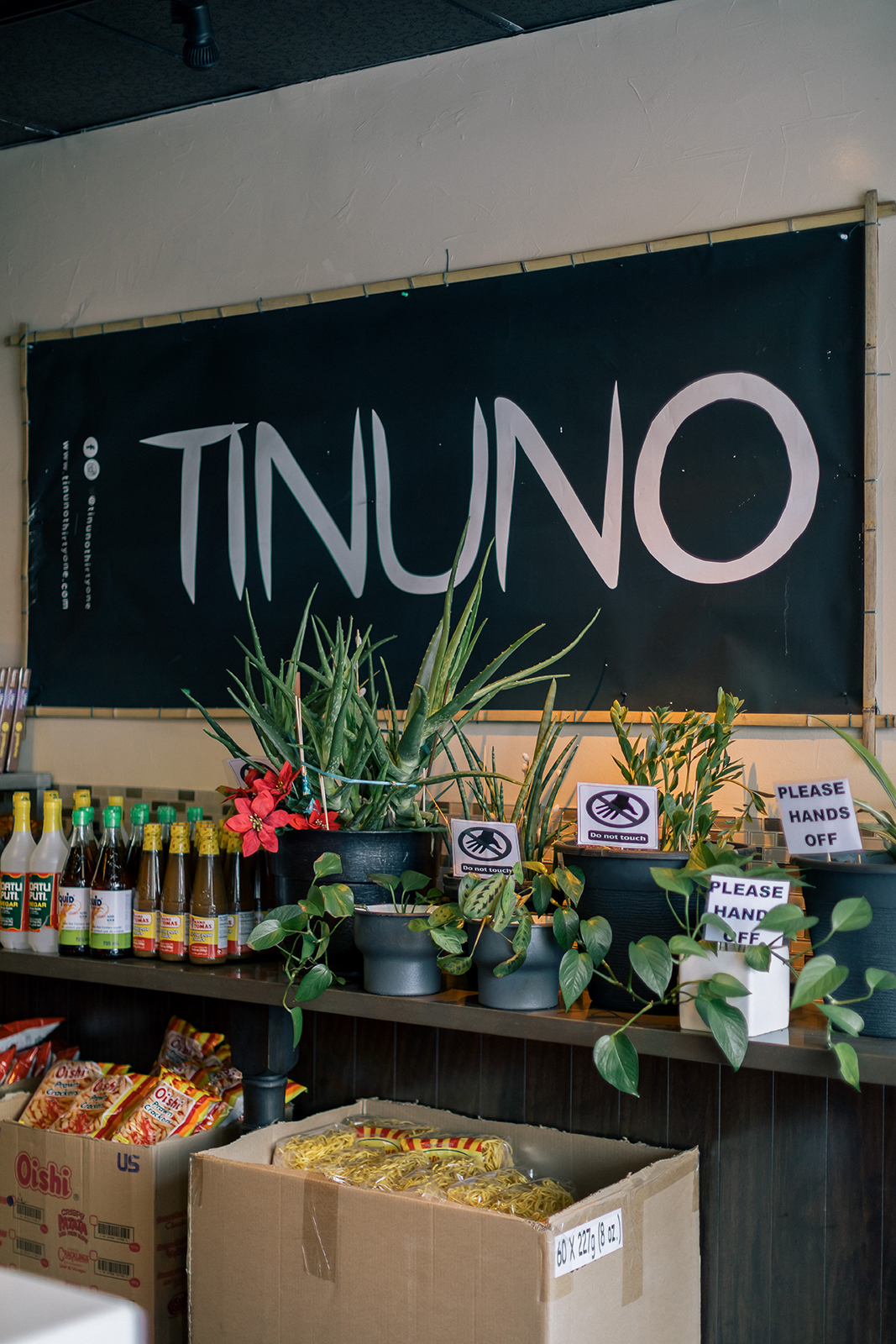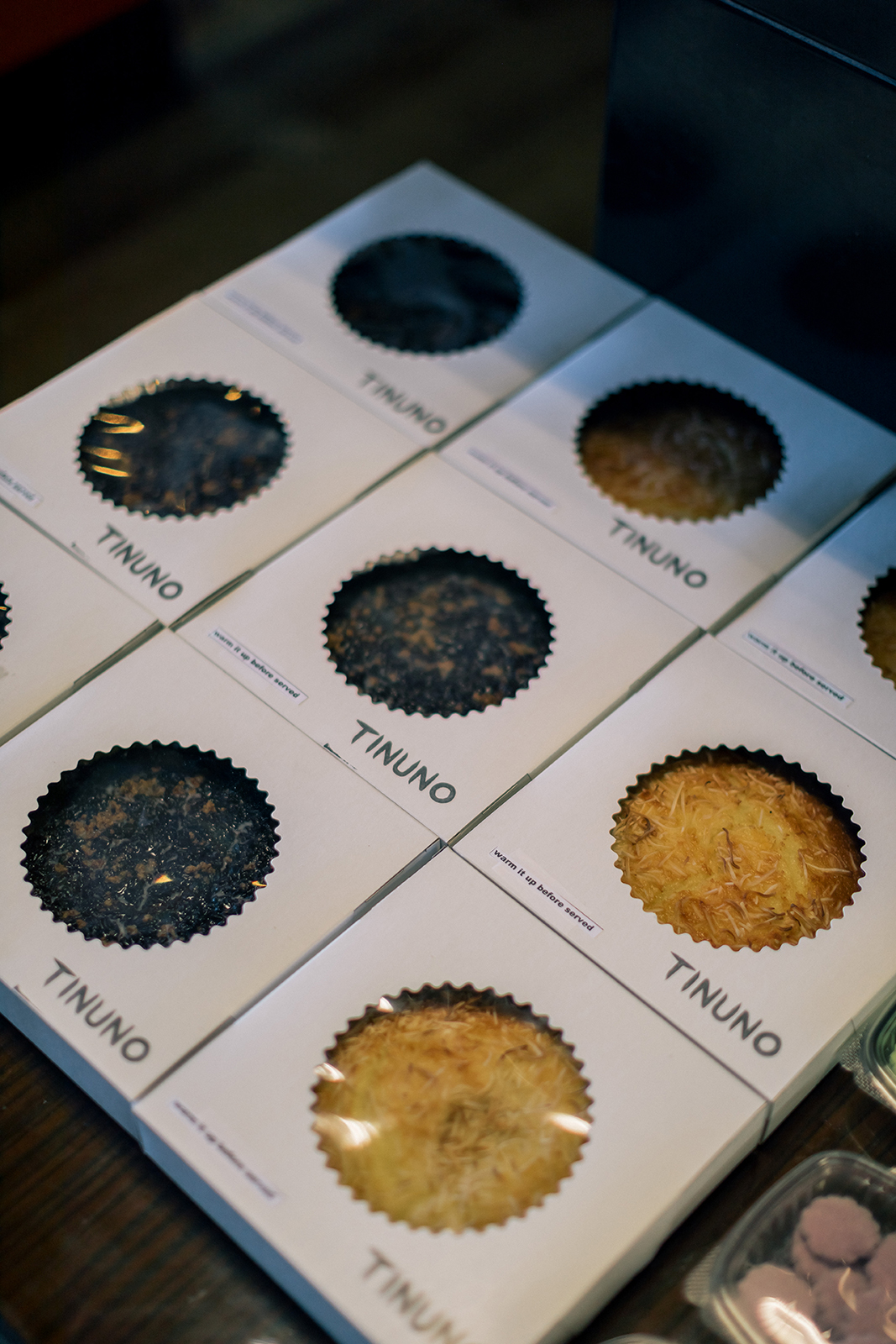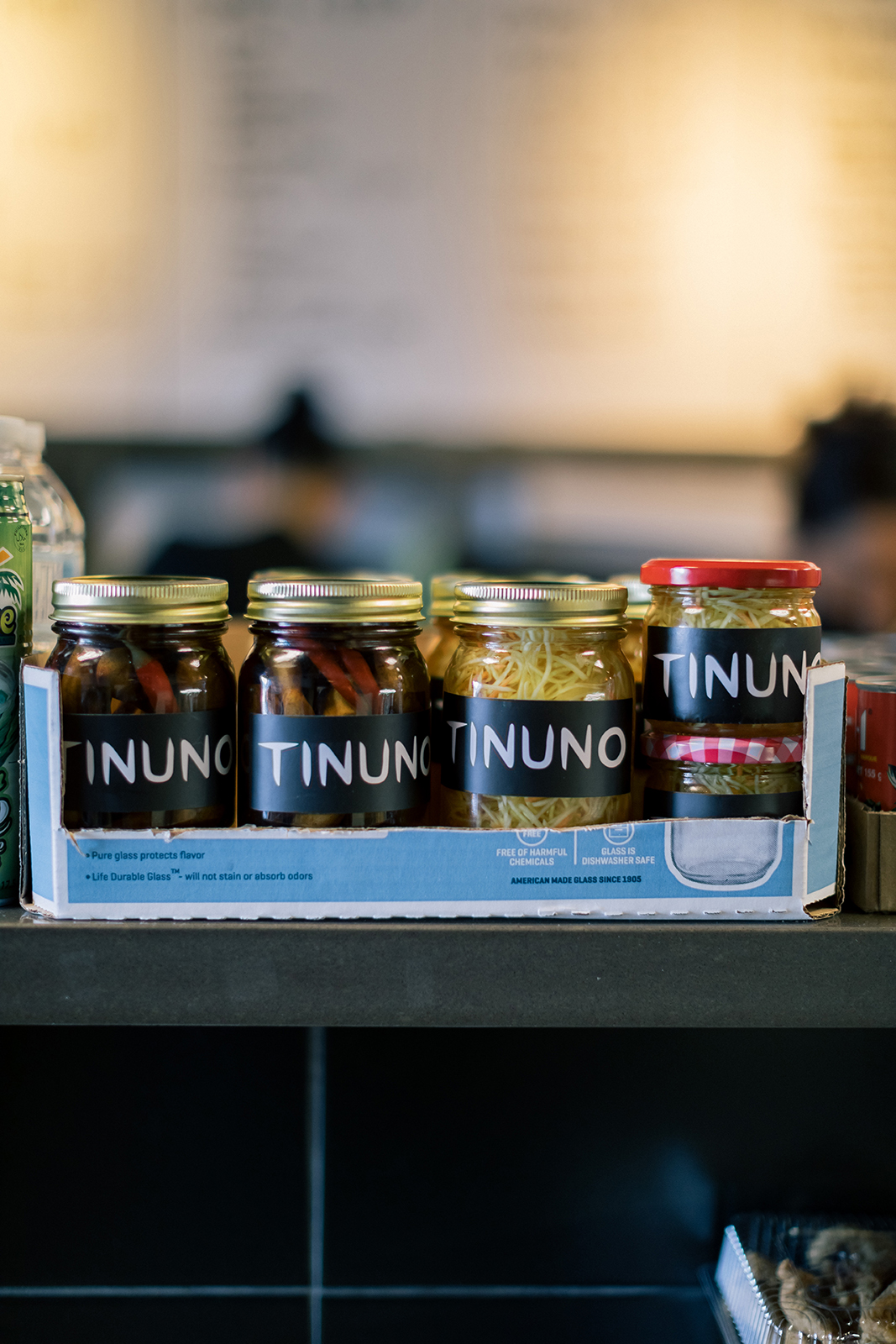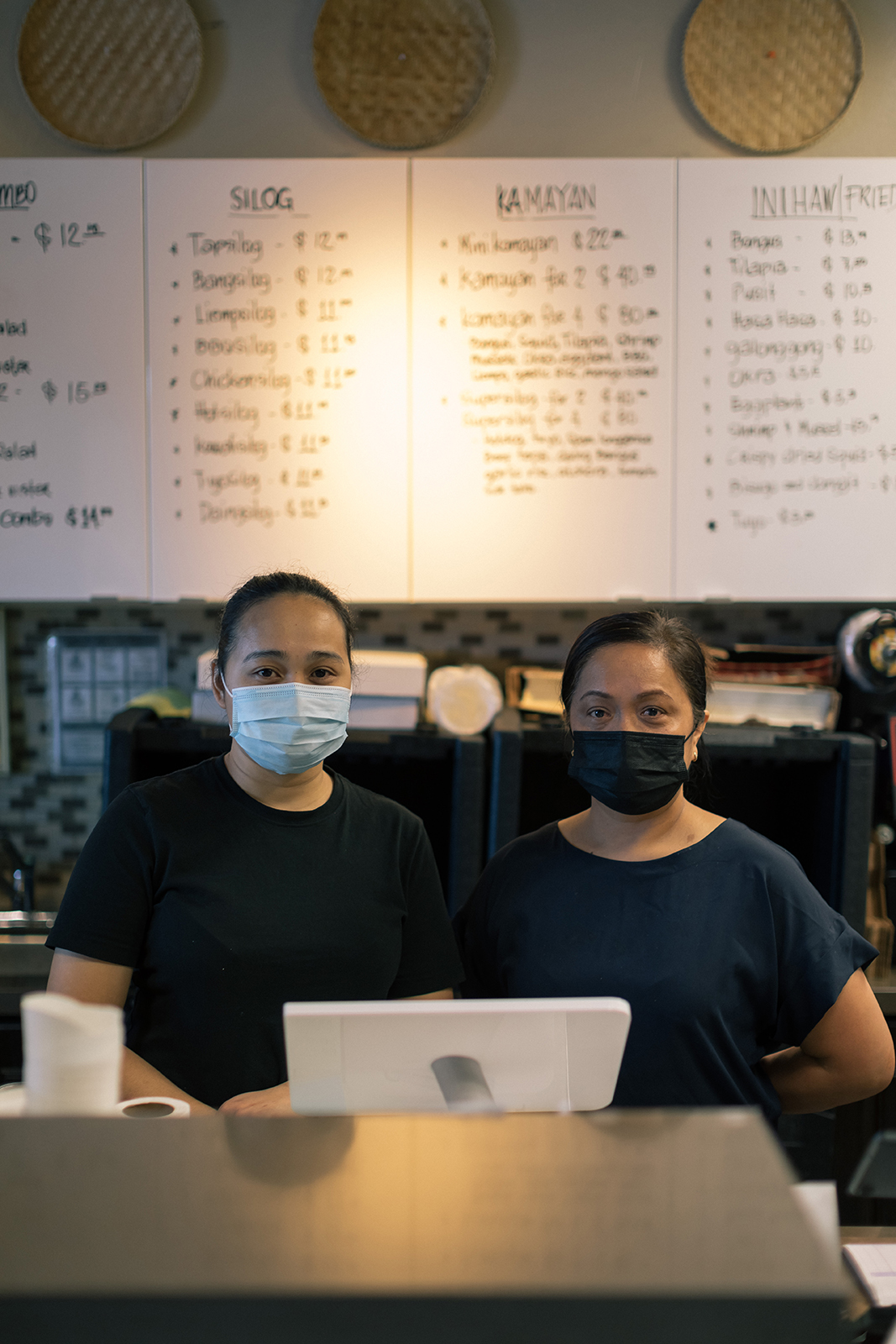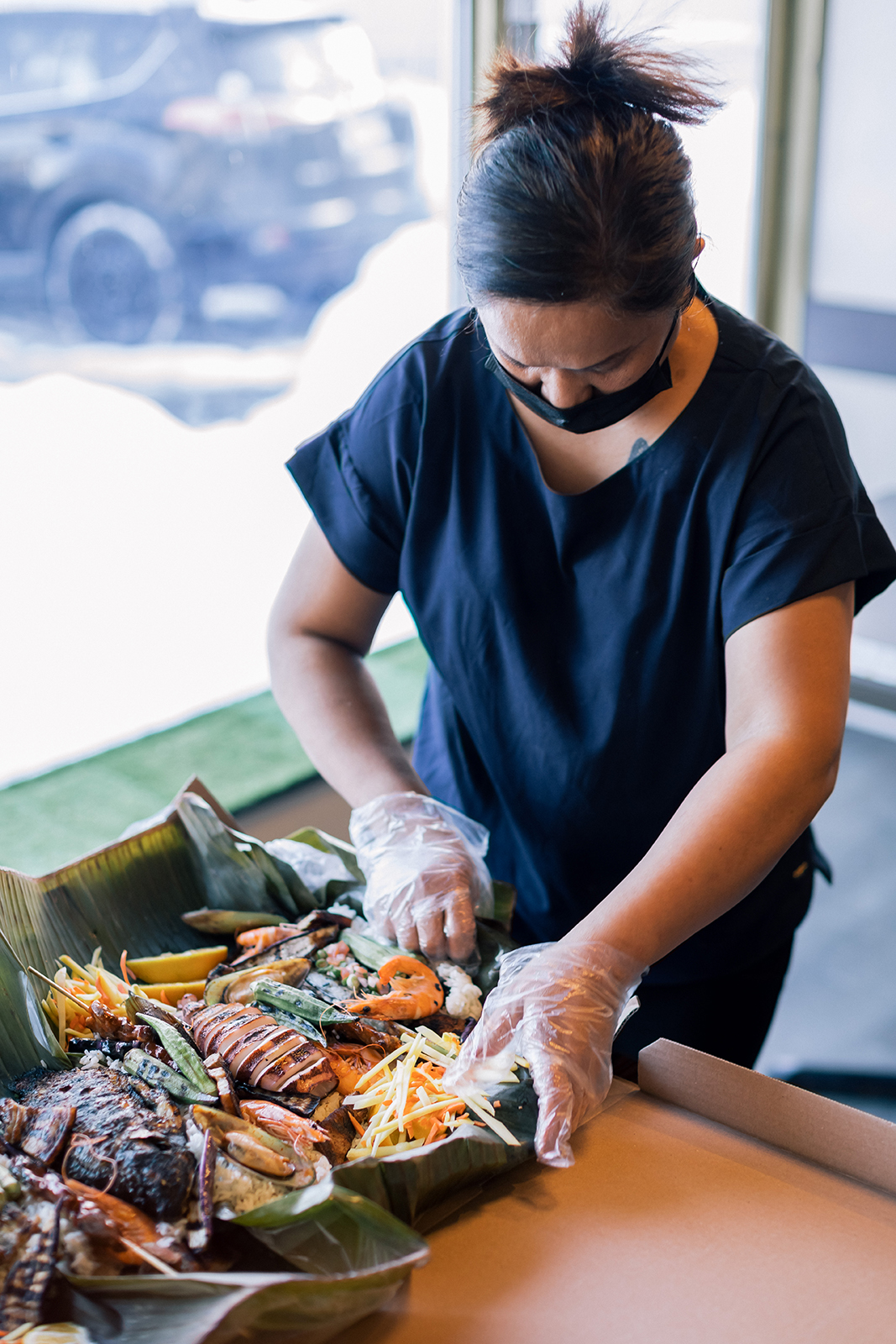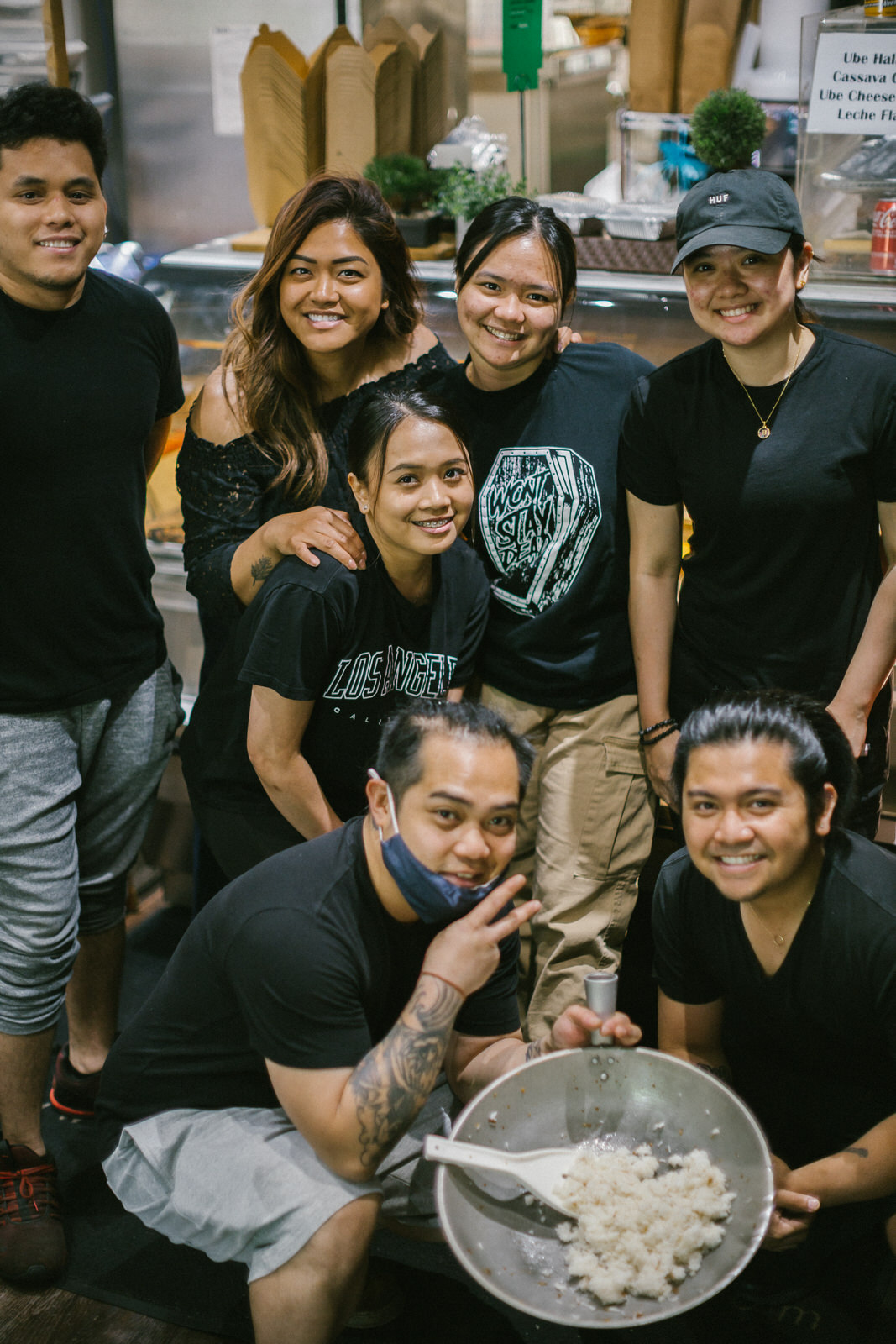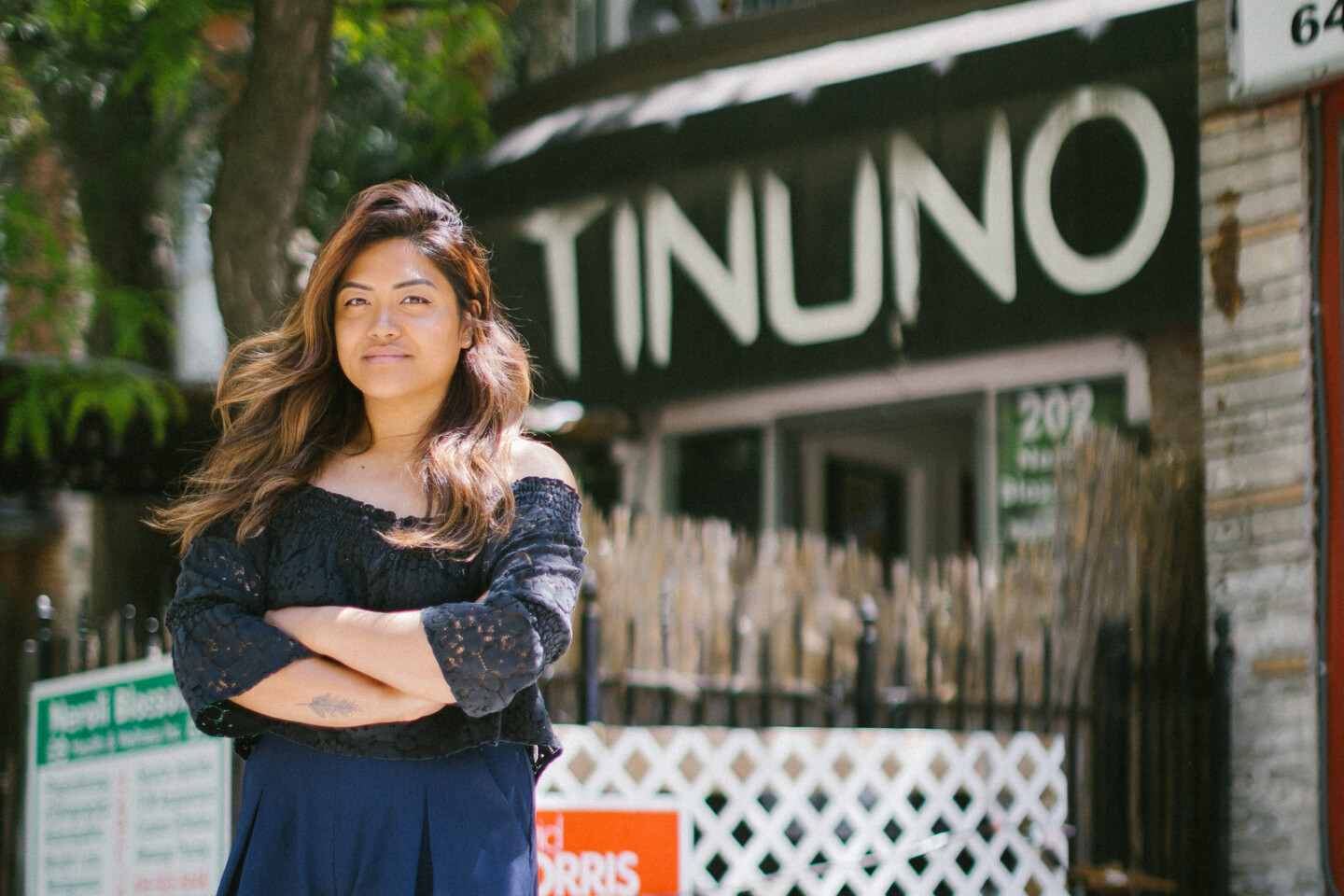
There is the adage: a way to a man’s heart is through his stomach.
Engendering attributed to its conception aside, there is a truth in that food is the gateway to one’s heart. And even one’s soul, culture, and traditions. After all, food is the nourishment of the body and the comfort of the soul.
We spoke with Sasha Ortega, founder of Tala and Tinuno, two Filipino restaurants, and how they brought a slice of the Filipino palette to the Filipino diaspora in Toronto, Canada.
A classic story of next-generation Filipinos connecting community and cooking, Tala and Tinuno are two pieces of an important story: a rejuvenation of classic dishes through disruptive takes, the story of distant cultures spread through cuisine and migrant communities, and family businesses that try its hardest to make it through the pandemic.
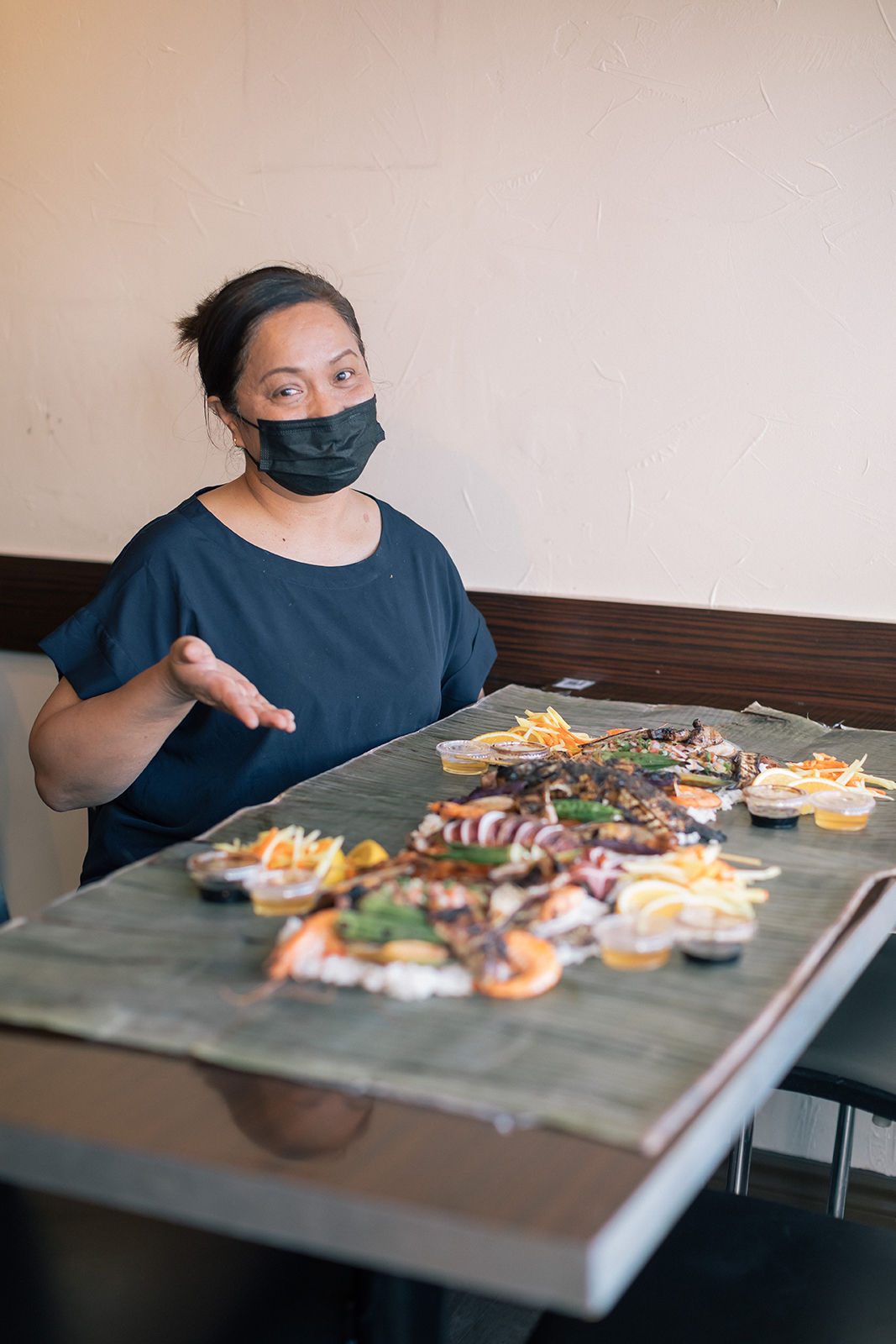
Cathy Ortega, mother of Sasha and head chef at Tala and Tinuno
(This portrait was shot during the strict lockdowns in Toronto.)
First off, let’s talk background and the lead-up to the founding of Tala and Tinuno. How did they start?
I was born in the Philippines and was raised there until I was five years old before coming over here to Toronto. I was pretty much raised in a Filipino environment, speaking Ilocano of which I was more comfortable with, and the occasional Tagalog. My mom moved here to work as a nurse.
As you know, the nursing boom at the time wasn’t kind to Filipinos so she started reevaluating her career options. In particular, she found interest in cooking—something she loved to do. After attending culinary school focusing on Italian cuisine, she started working in the industry. But even when she would get luxury restaurant jobs, there was still that glass ceiling.
Not only was she a woman, but she was a Filipino woman, and with those intersections, she would get people saying, “Look at this tiny little Filipina cleaning lady, thinking she can cook better Italian food than me.”
It was only a matter of time before she thought to embrace Philippine cuisine more, so she did. After the numerous video calls from home just trying to remember old recipes, we knew this could be something big.
What’s it like opening an international cuisine business across the border?
It first started with something like a sari-sari store. It had a hot table which was sort of like a convenience store. One of my friends went over to me and asked if I wanted to host a kamayan (eating with hands) for their birthday. The setup would be straightforward: shelve some of our products aside, put out a long table, the whole shebang. They put the event up on Facebook, and we just kept getting attention after that.
There wasn’t anything like it in Toronto at the time. Yeah, there were international cuisine like Ethiopian, Indian, but Philippine cuisine? Nobody who wasn’t a Filipino would be interested in having Filipino food so we thought it could use the exposure. It was a no-brainer after that.
One kamayan night turned into another, then a few more nights. Before we knew it, what started as a little convenience store became Tinuno, an actual restaurant that focused on kamayan.
We knew we needed to focus on the branding, so my background in advertising came in handy in figuring out how we marketed ourselves. While marketing launched the initial interest at getting people through the door, inevitably, it was the food they came back for.
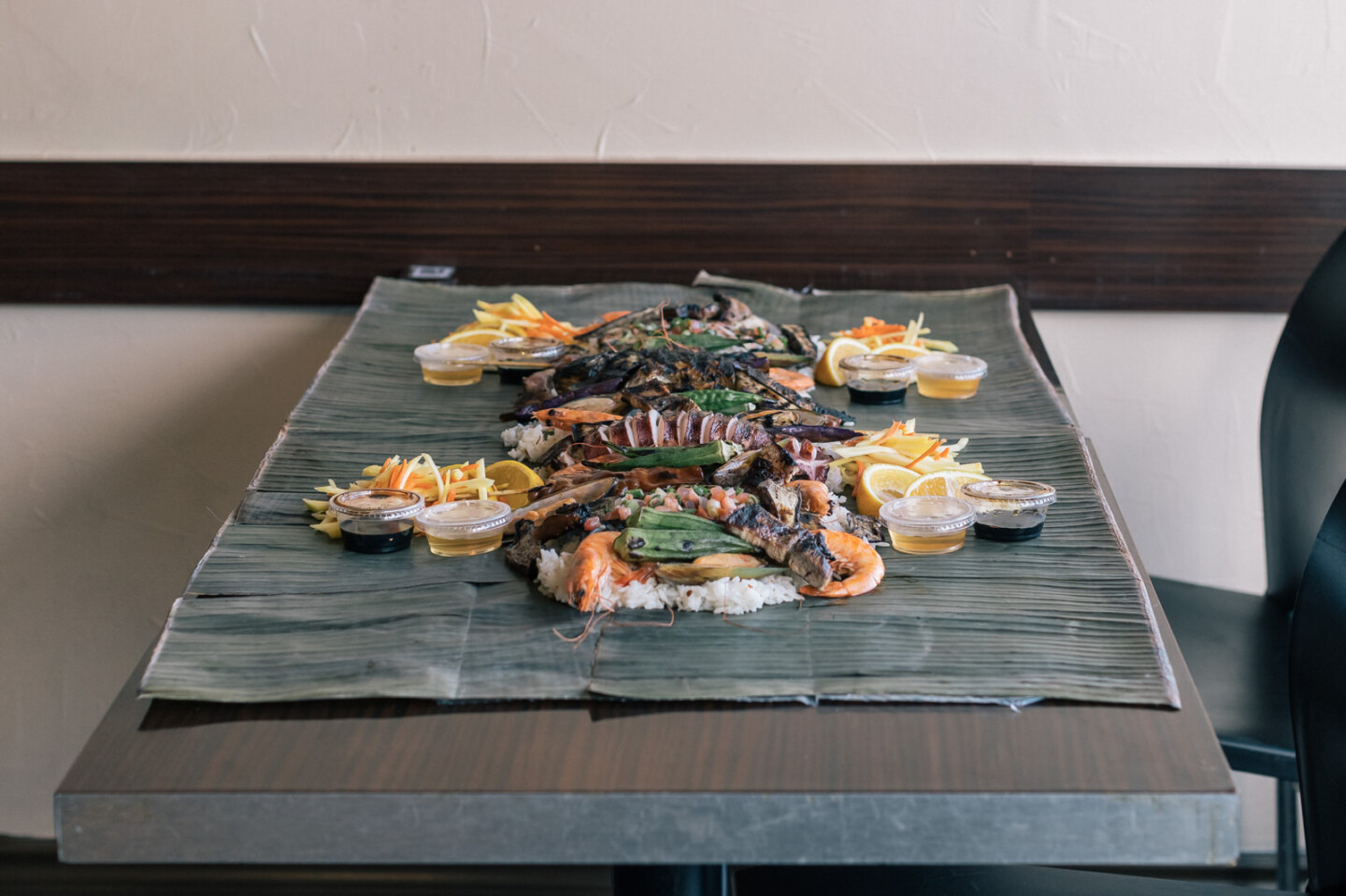
How would you differentiate Tala from Tinuno?
Since Tinuno started to become so successful, we needed to diversify and focus on takeout. Kamayan isn’t takeout-friendly on account of the whole eating-with-your-hand thing. So we thought: “What if you take the binalot concept and set it to its own space?” That’s where Tala (@tala.toronto) comes in.
Tinuno and Tala are our dine-in versus takeout options for basically the same food. Tinuno helps people make a choice of the food that they want at our restaurant location, but Tala is the curated take-home option—with the help of pizza boxes, of course.
If you could attribute Tala and Tinuno’s success to something, what would it be?
I must stress that the ‘way’ the food was served, how it was interacted and engaged with, and the ambience that this kind of eating provided were very important.
Tinuno leveraged on the kamayan aspect, which is very experiential, visual, and gustatory. When we first opened, it was very Ilocano-focused while still having some generalized staples like the barbecue sticks which were always such a hot sell.
But we also had pinakbet and dinuguan—these items were a little harder to pitch for the customers who are less familiar with Filipino food. At first, nobody’s really on board with having pig’s blood or bitter gourd and squash, you know?
As for Tala, it sounds insane, but I still think that if we never hatched on the ‘Instagram-able’ factor of those pizza boxes—all the iconic imagery of our food using those boxes—we might not have launched so successfully.
Of course, people stay for the food, but they still need to get through the door, and that’s what the brand experience helped push. It’s really important to look at it as a whole.

How do you ensure that both Tala and Tinuno are able to meet customers’ expectations? How do you curate your lineup?
It’s a lot of checking what the customers want and what they look for. When we were working with the concept of binalot for Tala, the first pick was pork sisig. Here [in Toronto], there’s a lot of vegans and vegetarians, so we were always getting requests for a vegetarian version [of sisig] that we ended up concocting a tofu version prepped the exact same way but substituted with tofu that mimicked the right textures of pork. We tried our best at replicating the flavor with a little bit of fried garlic that brought the right after-taste and perfect meat-like texture.
We even have something called the super-silog which has a huge variety of all kinds of silogs available. This came about because of the group of friends we had, who would come in and order all the different kinds of silogs then sampling, mixing, and matching, all to taste each other’s! It wasn’t long after that before we decided to throw everything and mash them all up as a single dish.
How do you think you are engaging the phenomenon of shared cultural experiences in the international sense?
Community response has such a huge part in how Tala was perceived. We could have brought as many people as we want, work on everything as hard as we could, but what mattered the most was that people wanted to come in and try new food with their friends.
There’s always something for everyone. Vegetarians have a place at our table on account of food customization being at the core and the heart of what we do. Kamayan is very much an “eat-with-your-eyes” experience because you develop an eye for the cuisine before you’ve even had a taste. Therefore, you kind of agree with it just by looking at it. And for some, that’s a huge step when it comes to international dining and foreign cuisine.
The performance aspect of it too like seeing the food laid out in front of you, taking pictures or capturing the food brought out on video, that’s a completely different experience, too! Seeing the garlic rice on video, seeing the different pieces being plated on the table, comes with such a huge aspect of theatricality, you really don’t expect it.

How did you deal with the restaurant closures and restrictions in the pandemic? Did the demand get affected at all?
We were all so shocked, to say the least. I’d just resigned from my previous job, the grand opening of Tala was delayed, Tinuno had closed for the month at that time, and our social media pages were basically dead. But we still wanted to try something, despite there not being any dine-in, and even though we had the space, what could we do?
We sat for a while—and I mean, a while—in the shop, just wondering how we could get around this. And then we thought about pizza boxes and what we could do with it. On a whim, we plated the food in the box, and let me tell you, it looked like nothing I’ve ever seen before. It was stunning, and we knew we had to do something with it.
While Tinuno needed some time to recover, Tala was already getting some traction in. And throughout the pandemic, people did not stop ordering, especially from local businesses except maybe for the first two months, when everything was closed, but just weeks after that? I mean, everybody would get tired of eating their own food, being stuck inside all the time, so getting takeout would be inevitable at that time for anyone.
Photographs by John Crawford
What advice can you give to fellow Filipino food creators working in Toronto or just abroad?
Something that I can depend on is knowing that the Filipino community is so inviting and open about sharing food. It is very welcoming and never becoming so competitive about the food culture. While some can be a bit like that, we’ve had tons of people who have wanted to open their own restaurants in the city reach out to us. It’s an effort to bring the Filipino cuisine to a global stage, so it can’t only be one person doing that.
So do it. Have people connect more with that. Bring in more suppliers. Hell, even talk about it, like in this interview. [laughs]
Any little bit anyone can do to bring the cuisine to a less unknown space always goes back to the culture it came from.
SUPPORT PURVEYR
If you like this story and would love to read more like it, we hope you can support us for as low as ₱100. This will help us continue what we do and feature more Filipinos who create. You can subscribe to the fund or send us a tip.

